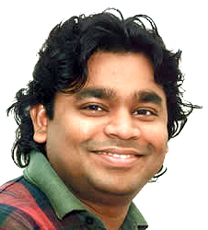
Looking at Aamir, Rehman and Sachin, I have always wondered about the striking parallels between them. The post 90s  generation has been lucky to have these three absolutely world-class performers setting new standards in each of the three uniting passions of this nation.
generation has been lucky to have these three absolutely world-class performers setting new standards in each of the three uniting passions of this nation.
 generation has been lucky to have these three absolutely world-class performers setting new standards in each of the three uniting passions of this nation.
generation has been lucky to have these three absolutely world-class performers setting new standards in each of the three uniting passions of this nation.All  of them have somewhere reinforced our faith in our abilities to take on the best in the world in our respctive fields. Their single minded, almost obsessive devotion to their respective crafts, the extremely private existence beyond their profession, and an unbelievable refusal to succumb to any of the power/celebrity temptations of their success is something which has natural resonance with most of us.
of them have somewhere reinforced our faith in our abilities to take on the best in the world in our respctive fields. Their single minded, almost obsessive devotion to their respective crafts, the extremely private existence beyond their profession, and an unbelievable refusal to succumb to any of the power/celebrity temptations of their success is something which has natural resonance with most of us.
 of them have somewhere reinforced our faith in our abilities to take on the best in the world in our respctive fields. Their single minded, almost obsessive devotion to their respective crafts, the extremely private existence beyond their profession, and an unbelievable refusal to succumb to any of the power/celebrity temptations of their success is something which has natural resonance with most of us.
of them have somewhere reinforced our faith in our abilities to take on the best in the world in our respctive fields. Their single minded, almost obsessive devotion to their respective crafts, the extremely private existence beyond their profession, and an unbelievable refusal to succumb to any of the power/celebrity temptations of their success is something which has natural resonance with most of us. Isn't it interesting how even physically these three guys are remarkably similar with their short height, curly locks and baby faces? Wonder if there is a common archetype at the heart of it all!
When a nation is on an economic upswing, its ascendancy is also felt across other fields like cuture, sports and entertainment.
Today, the Indian soft power has something more to offer beyond yoga, henna and tandoori chicken as Rehman breaks all language barriers to take Indian music to different parts of the world. Sachin's fearless strokeplay provided the confidence in our players to take on the likes of Australia and Pakistan and our cricket witnessed its gloden-est period ever with the likes of Dravid, Ganguly, Laxman and Kumble forming the kernel of a fairly successful outfit. Aamir demonstrated that being a super-star and being an outstanding actor were not mutually exclusive (fans of Shahrukh and Amitabh may disagree, but my strong views on their acting skills will be the subject of another blog).
While Rehman and Sachin have managed to have stable marriages, Aamir's divorce after nearly a decade of marriage continues to be looked at as one sour note in an otherwise clean celebrity life, by quite a few of his fans.
These three guys emerged towards the late 80s early 90s and have consistently provided us all with one sublime performance after another. From the looks of it, while Rehman and Aamir continue to reinvent themselves, Sachin is still searching for some direction for the next phase of his career. It will be of interest to see if these guys reinvent themselves in a manner that is befitting their stature. If i were to risk some crystal gazing, I see an opportunity for Rehman to outdo a certain Reshammiya to emerge as the first truly global rock star out of India; Sachin clearly has role models in Gavaskar and Vijay Amritraj to build a great career beyond playing cricket and Aamir most certainly is a director to look forward to.
Hopefully, there is still lots more magic left with these maestros for a few more decades of pure joy.










